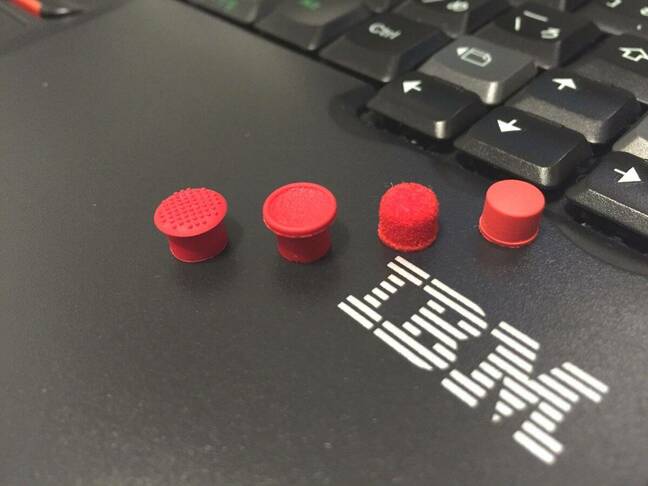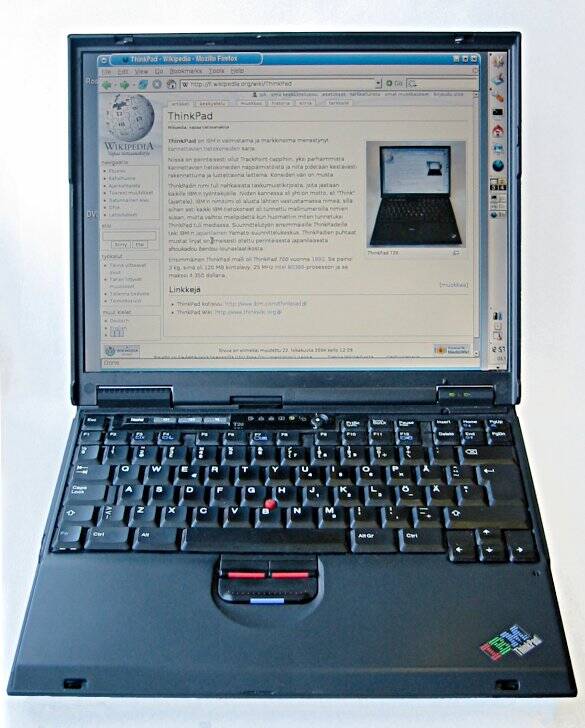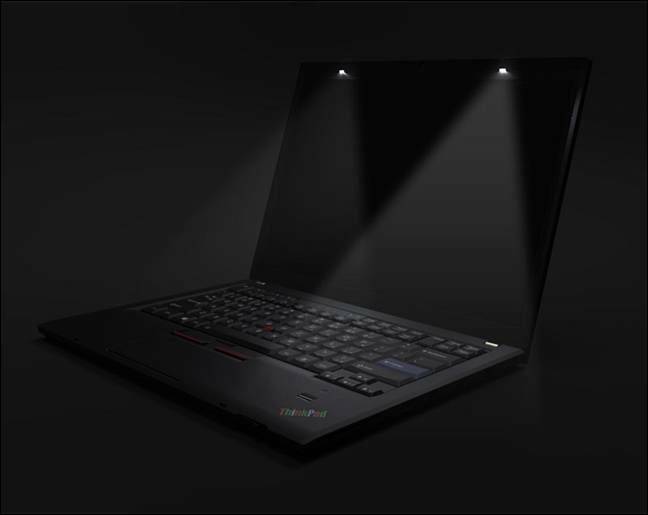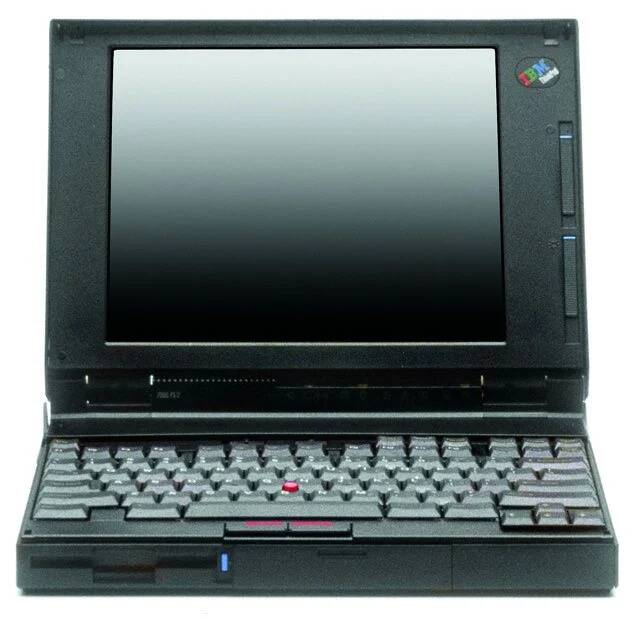Interview Launched in 1992, the boxy black ThinkPad with its little red nub remains the quintessential business productivity notebook. Unlike commercial offerings from competitors such as Dell and HP, Lenovo’s laptop has a following of people who collect old models and celebrate each new innovation.
If you bought a ThinkPad between 1995 and 2017, it was probably designed under the oversight of David W. Hill, who served as lead designer under both IBM and Lenovo for those 22 years. We caught up with Hill, who today runs his own firm, ThinkNext Design, to talk about the history of ThinkPad, what drove him to make key design decisions, and the products he wanted to come out with but just couldn’t.
In a wide-ranging conversation, Hill revealed that he tried several times to introduce additional laptops that had the famous “butterfly keyboard” found on the ThinkPad 701C. He spoke about wanting to create a portable all-in-one desktop that would fold up like a laptop. And he explained the evolution of the TrackPoint nub and the ThinkLight overhead light.
Hill’s career before ThinkPad
Hill started at IBM in 1985 and spent ten years working as an industrial designer on non-ThinkPad projects, including the company’s AS/400, a mid-range computer (between a mainframe and a PC) that came out in 1988. At the time, most PCs were gray or beige.
“I led the design, most notably of IBM’s AS/400 Advanced series. Which was all black, which was unbelievable in the world of servers at the time,” he said. “It was all black and kind of menacing looking as some people said. But now you can hardly buy a server that’s not black.”
ThinkPad launches in 1992
The original ThinkPads, the 300, 700, and 700C, came out in October 1992, and were designed by IBM stalwart Richard Sapper, with the idea that they would look like bento boxes. These were also the first laptops to use a pointing stick, the vaunted TrackPoint, which still appears on Lenovo’s commercial laptops today. At this time, Hill was not yet on the team.
“I thought it was brilliant, and I still think it is,” Hill said of the nub. “You know, there’s some people that don’t like a TrackPoint, but I think a lot of those people probably never tried one.”
The butterfly keyboard
Hill took over the design reins of ThinkPad in 1995, just as the company was launching the ThinkPad 701C and its unique keyboard mechanism. The design work on this was done before he started, but he got to work with its creators John Karidis and Sapper and learn this iconic laptop’s inside story. Unlike every other laptop, which has a keyboard that’s the width of or shorter than the lid above it, the 701C used a butterfly-style keyboard that folded open to become larger when the laptop was in use.
“There was always a mismatch between screen size and full-size keyboard. Because when the 701C came out, that was about the biggest screen you could make,” he said of the laptop with its 10-inch display. “People forget about this, but it was very difficult to make a full-color screen that was really big. You wanted to have a full-size keyboard; you ended up with a huge border around the screen.”
It was Karidis who came up with the game-changing butterfly concept.
“John Karidis had this brilliant idea that the way to solve this was inspired by wooden blocks. He had a daughter and they were playing with these wooden blocks and there’s two blocks that are rectangles,” Hill said. “So he went to work the next day with this ‘aha’ moment, and he put a keyboard from a ThinkPad on a copy machine and then cut it at a diagonal with a pair of scissors and put it back together in two different directions… And then he invented this mechanism to make it actually move when you’ve opened the display.”
Hill told The Register that he had wanted to make more ThinkPads with butterfly keyboards and had tried at least three times to make it happen – in one case there was a prototype where only half of the keyboard moved – but was never able to get there. Eventually, screens became big enough that there was no need to have a keyboard that expanded. However, Hill said, he thought about putting a butterfly keyboard on a netbook when they were a viable product category in the late aughts.
Changes to everyone’s favorite nub
In addition to this work on ThinkPad keyboards, Hill also had influence over the design of the TrackPoint. The key improvements he oversaw were changes to the TrackPoint’s red cap and its height.
“When I first started working on ThinkPad, [the TrackPoint] was rough, like it was called the ‘cat tongue.’ It was basically like sandpaper. And it gave you great traction, but I thought it didn’t feel so great,” he said. “I launched an initiative to create a new TrackPoint cap and we ended up actually developing one a lot of people called ‘the Golf Tee’ and then one called ‘the Soft Dome.'”

Four variations on the ThinkPad cap – Soft Dome, Golf Tee, Classic Dome, and Eraser Head. Image by Raymangold22, Creative Commons 1.0
For several years, ThinkPad owners got three types of TrackPoint cap – Soft Dome, Golf Tee, and Original Dome – and could choose among them. However, at this point, the Soft Dome design has won out with a rather large, flat top that’s filled with dots for texture and an easy grip. Hill said that he also changed the height of the TrackPoint over the years, making it shorter as the laptops themselves got thinner.
During TrackPoint’s heyday, Lenovo also licensed the technology to other companies while some competitors tried to make their own versions. Dell, Acer, HP, and Toshiba all had pointing sticks on their business laptops. However, none of these competitors were allowed to use a red cap and the feel just wasn’t the same.
Another feature that Hill implemented was a scroll button for the TrackPoint, which is still in use. Today, the button sits between the left and right click TrackPoint buttons and allows you to scroll horizontally or vertically if you hold it down while pushing on the nub. In the early years of ThinkPad, there was no scroll button at all and then, in models like the ThinkPad T20 (shown below), it was in its own row below the left and right click buttons.

ThinkPad T20 with its scroll button below the left/right click. Image by J-P Kama, Creative Commons 3.0
At one point, after IBM added touchpads to its laptops, Hill was almost forced to remove the TrackPoint scroll button because it was getting in the way of the pad.
“There were a lot of people who said ‘well, we’ll just get rid of it,'” Hill recalls. “And I said, ‘whoa, wait, wait a minute. This scrolling thing with a TrackPoint is a huge advantage because I can just hold down one button and I can scroll omnidirectionally. I’m not just talking up and down. I’m all over the whole screen.'”
He eventually created a compromise where the scroll button moved in between the left and right buttons. Although touchpads have gotten a lot better over the years and every manufacturer but Lenovo has ditched its pointing sticks, Hill still believes that the TrackPoint is the best way to navigate on a laptop.
“It’s very efficient because you don’t have to take your hands off the home row [to use a TrackPoint]. And you’re not wildly moving your hands around like when you’re rubbing a pad or or rolling a ball with your thumb,” he said.
Hill said that, while he still gets new ThinkPads and uses them, he would not be interested in owning the ThinkPad X9, which is a new model that lacks a TrackPoint in an attempt to appeal to a different demographic of users than other SKUs.
ThinkLight, a better way to illuminate the keyboard
One of the features Hill is most proud of developing is the ThinkLight, an overhead light located above the screen that lit up the entire keyboard and deck. Though the advent of keyboard backlights has made the ThinkLight redundant – Lenovo discontinued it in 2013 – it offers capabilities that backlights do not. If you want to place a paper on top of your keyboard, the LED will light it up, allowing you to see more than just your key legends.
The idea for the ThinkLight came to Hill when he was on a flight from Japan, where IBM’s Yamato Lab was located. He wanted to do some work on his laptop, but he didn’t want to turn on his seat’s overhead light because he felt guilty about waking up the other passengers. Then he noticed a woman on the plane with a tiny booklight attached to her book and inspiration struck.
When Hill got back to Raleigh-Durham, North Carolina, where he was based, he told his colleagues that he wanted to put an LED on the top edge of a ThinkPad and provide a switch to turn it on. His colleagues then made a prototype laptop with the ThinkLight and sent it to him. He immediately went to show it to the boss.
“So I called the general manager of ThinkPad at the time, Adalio Sanchez, and I said ‘Adalio, I’ve got something you’ve got to see,'” Hill said. “So he comes down, and I took him in this little closet, and I had the model sitting there, and I said ‘OK, I’m going to turn off the lights and I’m going to turn this thing on.’ And so I turn off the lights. You couldn’t see anything, right? I mean, you can see the display was illuminated. That’s it. I pushed the little switch, and he looked at it. He said, ‘We’ve got to make this.'”
Hill said he still misses the ThinkLight and notes that it was, at the time of the transition, much more cost-effective than a backlight. The former would cost 40 cents per unit while the latter added a full $12 to the bill of materials.
When designing the 25th anniversary ThinkPad, which came out in 2017, Hill brought back the ThinkLight, but he actually wanted to have – for the first time – two LEDs instead of one. The dual lights would have eliminated shadows and provided even better illumination, but unfortunately, this effort proved too costly to make it into the final product.

The 25th Anniversary ThinkPad almost had two ThinkLights – – Image courtesy of David Hill – Click to enlarge
The ThinkPad X300, proving that Lenovo could outdo IBM
In 2005, Chinese PC vendor Lenovo bought ThinkPad and the rest of IBM’s PC division. According to Hill, IBM had been winding down its PC business for years, looking to get out of the market.
“IBM at the time was, I like to describe it as they were slowly turning off hot water in the shower,” he said. “If you wouldn’t notice, the budgets get a little bit smaller. The portfolio gets a little smaller. They were less interested in developing new concepts. What they’re really trying to do is get the books in order and sell a business.”
After the sale, Hill got to work on building the ultimate ThinkPad, the X300. When it launched in early 2008, the X300 was one of the thinnest and lightest laptops made, tipping the scales at just 2.9 pounds with a slim profile of just 0.7 to 0.9 inches thick. And it did all that with a built-in DVD burner. It was also the first ThinkPad to ship without an IBM logo on it.
Hill said that the X300 is the favorite ThinkPad he worked on, not only because of its thinness, but also because it proved that, under Lenovo, he could build an even better product than he had for IBM.
“There was a giant scare that this Chinese company was going to destroy ThinkPad, and it was going to become cheerful and ruin it and all this kind of stuff,” he said. “And so we had this concept to build the best ThinkPad ever made that was so advanced and so well thought through that it would leapfrog anything that IBM had ever done.”
The X300 was an astounding critical success. It made the cover of Business Week magazine in February 2008 and became the subject of a book by Steve Hamm called The Race for Perfect. At $2,700 to $3,000, it was very expensive for the time, but it showed that Lenovo could compete with Apple’s MacBook Air, and that ThinkPad was here to stay.
Keyboard development: From seven rows to six
With their deep travel, snappy feedback, and ergonomically sculpted keys, ThinkPad keyboards have a well-deserved reputation as the best in the business. However, in 2011, there was quite a controversy as the laptops slowly moved from having seven rows of keys to six. Many ThinkPad fans did not like the change.
The seventh row sat above the function keys and provided extra room for keys such as Scroll Lock, Pause, and, on some models, tall, double-row Esc and Delete keys. It also had more traditional, square shaped keys that were packed closer together. The six-row keyboard got rid of some of the legacy keys, had no row above function, and used an island-style layout with the appearance of more empty space between the key caps.
Hill was involved in the decision to redesign the keyboard, which he says was largely based on the changing screen aspect ratios of the time. As laptops moved to wider 16:9 displays from the earlier 16:10 and 4:3, there was less vertical real estate on the deck to play with.
“It’s very difficult to make a seven-row keyboard anymore because of the aspect ratio of the display and the whole arrangement of the pieces on the inside,” he said. “It’s a decision that was not made lightly, however. I still like the seven-row keyboard and, as aspect ratios change, and they continue to change, I don’t know. Maybe someday somebody will be interested in it again.”
Years later, there was still a lot of nostalgia for the seven-row keyboard. In 2015, Hill was working on a retro ThinkPad that would become the ThinkPad 25th Anniversary edition (released in 2017). He surveyed users about what they’d want in the retro laptop and found that 80.3 percent wanted the seven-row over the six-row.
The ThinkPad mobile desktops we never got
When I asked Hill about products he wanted to come out with but never got to, he talked about an idea for portable workstations that would fold up like a laptop but have a separate keyboard and screen like a desktop when you put them on your desk. He collaborated with butterfly keyboard creator John Karidis on this concept, but couldn’t make it ready for market.
“We did a lot of experimentation with laptops that sort of unfolded to be more like a desktop: things where the display elevated or the keyboard would remove so you could use them like a workstation, rather than just being a clamshell with a hinge, you open and close,” Hill recalled. “We did a lot of experimentation with that and got close a few times, but never could completely sell it. I always thought it was an opportunity to create a new category.”
Maintaining ThinkPad traditions
Even after 32 years on the market, the iconic design language of the ThinkPad remains largely unchanged. The laptops have gotten thinner, lighter, and less boxy, but most of them are still raven-black rectangles with a familiar accent of red from the TrackPoint nub.
Hill was not opposed to offering other colors as long as black was the default. In some ThinkPad lines today, you can get a silver colorway and, on occasion, there have been other colors such as the fire engine red cover on the ThinkPad Edge in 2010.
“Black is a color that’s highly associated with ThinkPad. It’s like, Owens Corning fiberglass is pink and John Deere tractors are green and ThinkPads are black,” he opined. “But it doesn’t necessarily mean that you can’t offer a ThinkPad in a different color. I never really had a problem with that, as long as you can still get a black one.”
Hill said that his approach to ThinkPad design was to give it what he called a “purposeful evolution” where it changed to accommodate new features and developments, but the design language was always recognizable.
“I was very instrumental in creating this purposeful evolution model for ThinkPad. I didn’t think that it needed to be reinvented every year. I thought it needed to be improved,” Hill said. “It’s the same way Porsche treats the 911 or Jeep with the Wrangler. They don’t start over every year. They build on a heritage.”
One thing he changed over the years was the latch system. Originally, you had to pull two latches to open the lid and Hill wanted to cut that to one latch. So he made a design where one knob moved two latches at once. Eventually, the weight distribution in laptops changed so that latches weren’t necessary at all, because the systems were lighter and the lids did not fly open without them.
“You have to remember at the time [we had latches], these laptops were very thick and heavy: much, much heavier than they are today, and much more fragile. So having these latches was very important,” he said. “When you close it, when it pinged, it was almost like closing the door on a Porsche 911. It has this sound of authority.”
Hill also had some advice on navigating corporate politics, telling the story of a general manager of ThinkPad (whom he didn’t want to name) who tried to get him to remake the designs.
“They brought him into the design studio to show him the design models for the next generation, and he looked at me kind of funny. And he said, ‘These look like last year’s ThinkPads. I think we need something new.’ And I said, ‘Well, why? What problem are we trying to solve? This could be like redecorating the best restaurant in New York City and nobody goes anymore.'”
The manager was undeterred and ordered Hill to come back to him in 90 days with an action plan for redesigning ThinkPads. Hill took the issue to his manager, the VP of marketing for IBM’s PC business.
“I told him and he said, ‘Don’t worry about him. He’ll be gone by then.’ I said ‘Really?’ And he said ‘I’ve got your back. Don’t worry about it,'” Hill recounted. “I did nothing and he left.” ®
Correction: David Hill was not lead designer on the ThinkPad 701C as it launched just when he was joining the PC organization. The picture previously shown of an AS/400 was of a later model than the one Hill designed. Hill is pictured with a ThinkPad 700C, not a 701C.
Source link














